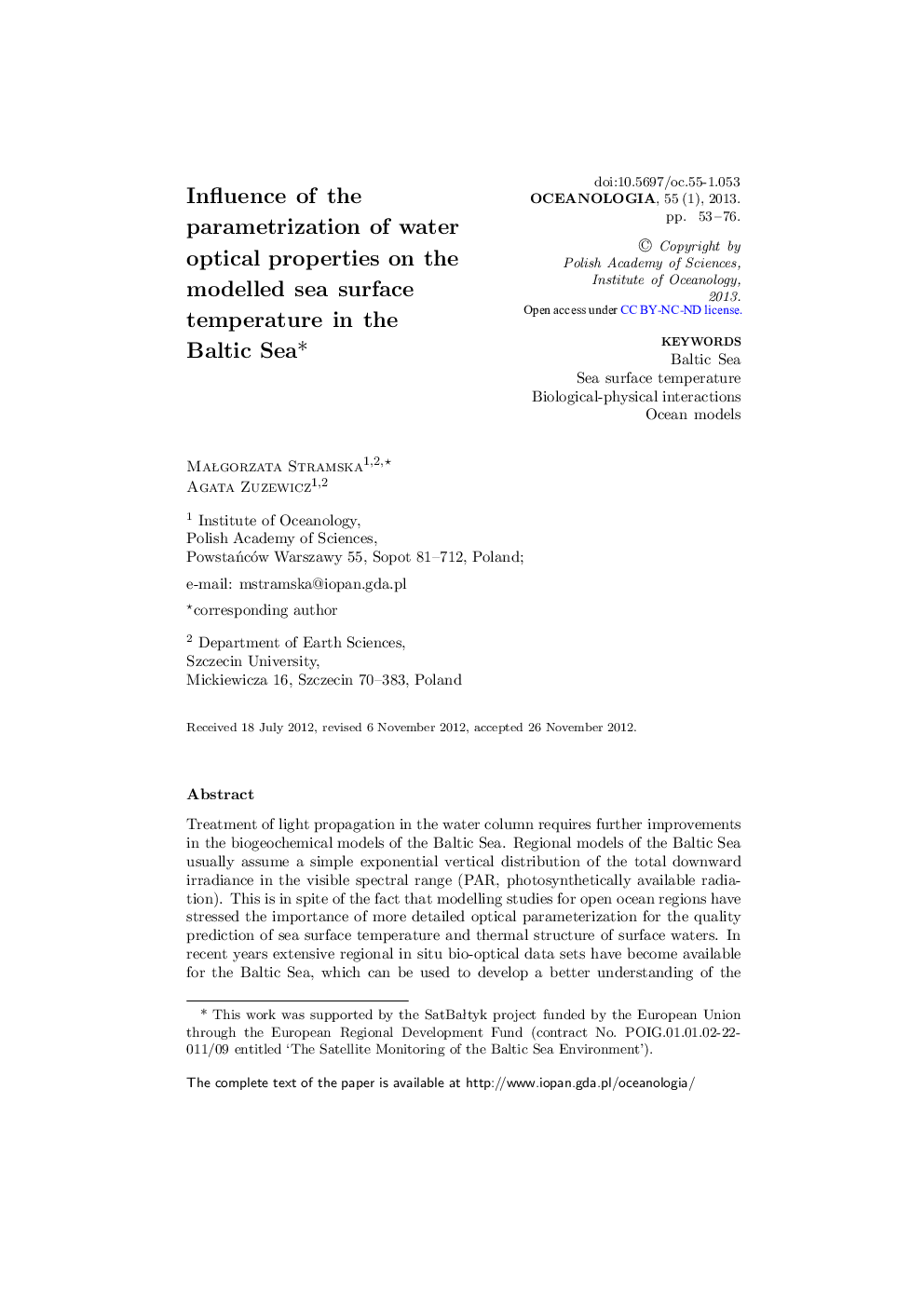| Article ID | Journal | Published Year | Pages | File Type |
|---|---|---|---|---|
| 2069955 | Oceanologia | 2013 | 24 Pages |
Treatment of light propagation in the water column requires further improvements in the biogeochemical models of the Baltic Sea. Regional models of the Baltic Sea usually assume a simple exponential vertical distribution of the total downward irradiance in the visible spectral range (PAR, photosynthetically available radiation). This is in spite of the fact that modelling studies for open ocean regions have stressed the importance of more detailed optical parameterization for the quality prediction of sea surface temperature and thermal structure of surface waters. In recent years extensive regional in situ bio-optical data sets have become available for the Baltic Sea, which can be used to develop a better understanding of the feedbacks between optics and other processes simulated by the models. In this paper we compare four optical parameterizations used in numerical ocean models and their effects on modelled SSTs. This has been achieved using a one-dimensional ocean model coupled with the bio-optical models. Our results indicate that the differences between the various modelled SSTs using three optical parameterization schemes designed specifically for the Baltic Sea can give differences of up to 4°C in the modelled SSTs. This result warrants further research into the subject.
